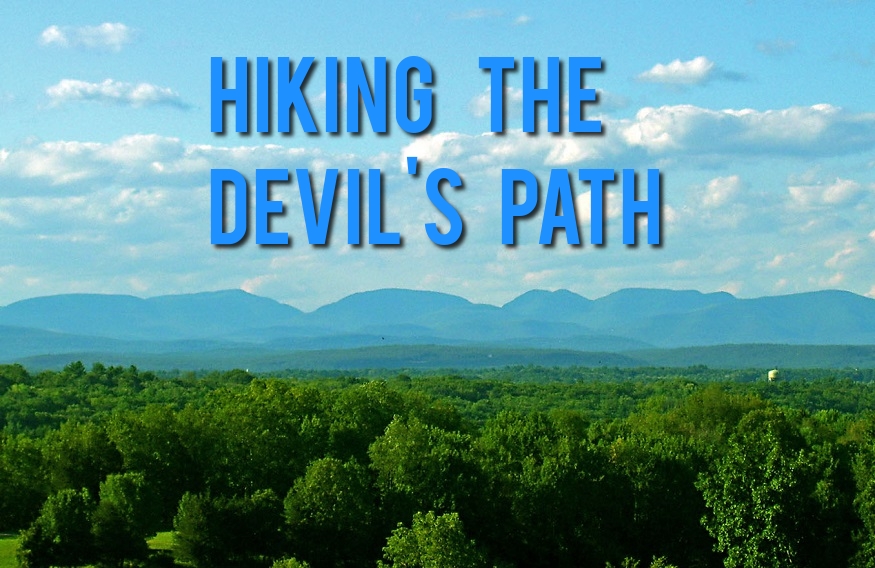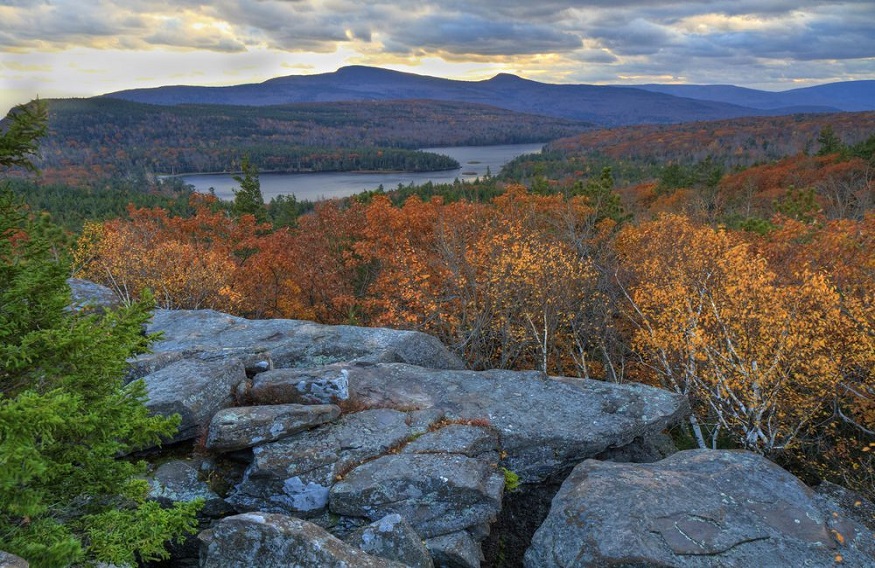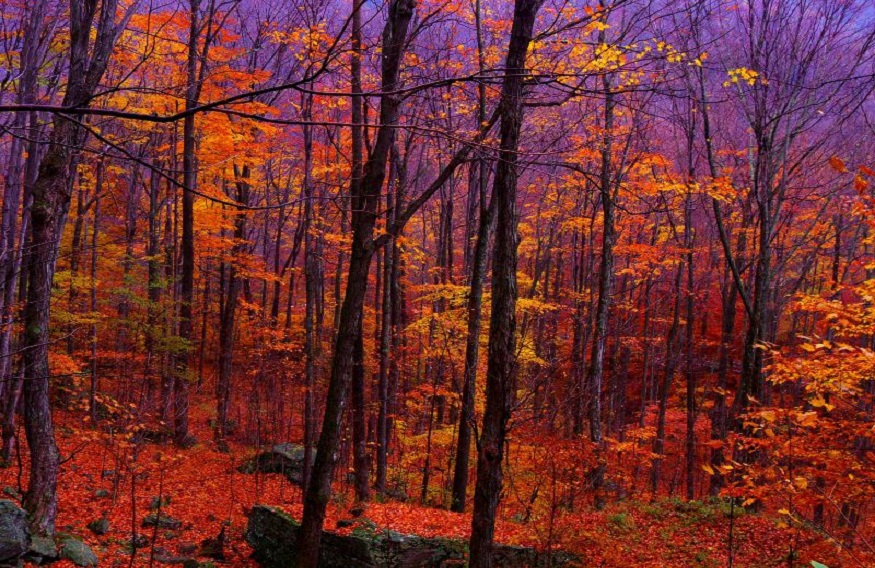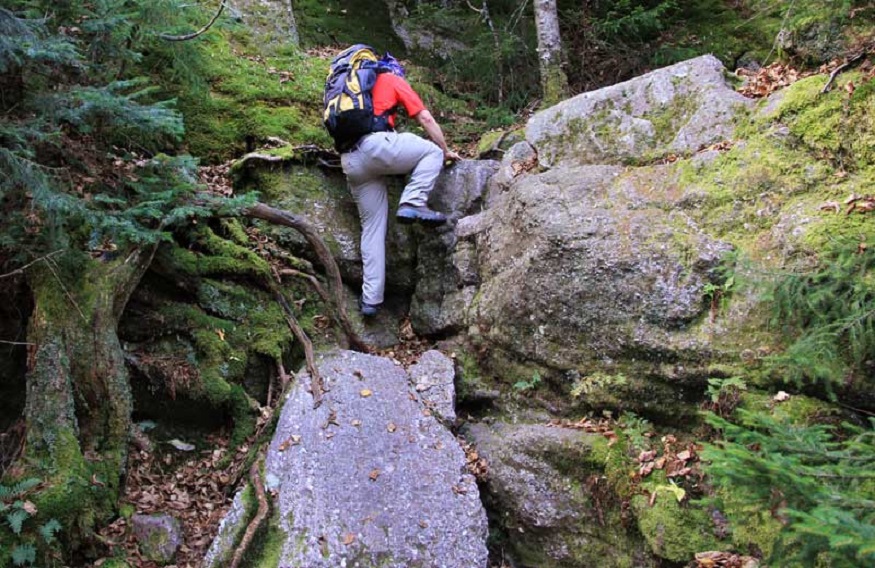
New York State is home to the most populated city in the country, New York City. It is called the Empire State for being home to some of the biggest business empires in the world. Its capital has been the center of trade and business in the world for years now. It’s also worth noting that New York State is the country’s leader in GDP which makes it the wealthiest state in all the 50 states in the union.
That’s not all New York is known for. There are plenty of wonders to see. It’s home to Niagara Falls and the world famous Central Park, which is located in the neighborhood of Manhattan and is the most visited urban park in the United States. You can also take a picture right next to the Statue of Liberty which is one of the most well-known icons of America and is the universal symbol of freedom. You can take a ride to the top of the Empire State Building which is the tallest structure in the state and is the world’s most famous building.
Strolling around Times Square around dusk and leave yourself in awe with the magical city lights. It can be crowded most of the time, but it is one of the most photographed spots in the city, so definitely worth a visit if you’re in the area. New York is also known for its museums, some of which include the Museum of Modern Art, the Metropolitan Museum of Art, the Museum of Curiosities, the Museum of the Earth, the Museum of Transportation and literally dozens of others. Some are government owned or non-profit organizations and some are private entities. Other things to see in the urban area include the Rockefeller Center, the Brooklyn Bridge, the Broadway and the High Line.
New York is not only urban parks and museums. There are plenty of wonders outside the industrialized city and urban areas. You may want to check out the Dover Stone Church, an aboveground cave with a hidden waterfalls inside or visit the Kaaterskill Falls in Greene County which is one of New York’s tallest waterfalls. The Island Sprouter, which is a geyser from the springs of Saratoga, Letchworth State Park, and Tinker Nature Park are also amazing options for spending a day outdoors.

While we’re talking about natural attractions in New York State, the Catskill Mountains is a gem tucked away from the mountainous southeastern part of the Empire State. Located around 100 miles from Manhattan, the Catskills have a lot in store for you. It is known for the Catskill Forest Preserve, which is popular for hiking, rich wildlife, and several ski resorts. It also offers other attractions to see like the Hunter Mountain Skyride, New York Zipline Adventure Tours, Pratt Rock, Hudson-Athens Lighthouse and Zoom Flume Water Park.
These past years, one of the reasons why the Catskill Mountains have been getting more recognized is because of the hiking trail called the Devil’s Path. This is known as one of the hardest hikes in the East and is often compared to the Great Range hike in Adirondack High Peaks. It is highly recommended for seasoned hikers and experts in the field of mountaineering. Now, if you’re looking for a challenge and plan to take on the Devil’s Path, here’s what you can expect.
The trail usually takes 2 to 3 days on an average to complete. For hikers who are in good shape, and plan to continuously hike without many stops and rests, they can possibly finish it within a day. For moderate and expert hikers the Devil’s Path is worthy of being included on your bucket list as overcoming this treacherous journey is truly a satisfying experience. The terrain is very demanding with its winding paths and steep downhill trails. It’s a 25-mile hike that will test your strength, endurance, patience, perseverance and your overall composure until you finish it and reach the endpoint.
At the trailhead, a registration is required to account for everyone that will take on the challenging trek. This is used to keep track of the people who traverse the path and also used in case of any emergency. This is named the Devil’s Path for a reason. It best describes what you will be participating in by making a decision to embark on this adventure. While the views may be amazing, the environment is not all that friendly. The path is not a leisurely, run-of-the-mill thing to walk through. It is actually part of the top 20 most difficult hikes in the country. To give a brief history on it, this trail was named by the ancient people who lived near Ulster and Greene Counties which claimed that only the devil can go there due to its level of difficulty with all the jagged peaks and unwelcoming terrain.
The beginning parts of the trail can be like a walk in the park. It’s not too challenging at first, but don’t be deceived by that as you haven’t really started yet. It is just a warm-up to help you prepare and be ready for what’s to come along the path. One good thing is that getting lost will not be an issue as there is plenty of signage posted along the trail to help guide and tell you which part of the track you are currently on. The signs will also let you know how long will it will take to get to the next point. Make sure to follow the posted markers so that you don’t go off track.

The first part of the hike will take you to the first summit of the trail which is called the Indian Head. If you come during the fall you can see some of the most beautiful foliage in the country. The area will be full of colorful leaves from all the trees along the way. It will take more than 3 miles to reach the Indian Head’s topmost part from the beginning of trail and you will also be able to see some of the other mountains in the Catskills from there. It is more 3500 feet above sea level.
You can then proceed to the next summit after taking a good break to rehydrate and capture some great photos. The next peak will be Twin Mountain which will take 1.1 miles away from the marker found at the base of Indian Head. After rocky paths and steep ascent, at 3640 feet above sea level, is the Twin Mountain’s summit. You may want to take a quick breather here, too. A snack while you are resting at the top is recommended to give you some energy since you will be encountering many cliffs and slippery rocks as you make your way down Twin Mountain.
Next stop, after more than a mile of steep ascent, is the peak of Sugarloaf Mountain. This one is measured at almost 3700 feet high and you can stop for some lunch or another snack depending what time of the day you reach it. You may notice, at this point, just how relaxing this area is. You will also have some more great photo opportunities at this summit. While going down to the next junction, you will come across a spring. This is a good opportunity to refill you water containers. The water is clean and cool which is perfect for quenching your thirst and boosting your energy lost from the last three peaks you were able to climb.
After filling up with water and crossing the spring, your next destination is the Plateau Mountain. You will be going through a forest featuring pine tree and mossy rocks on your way to the top. The change in the vegetation is very obvious since the previous greeneries are those with multi-colored leaves. The scene here will look like you just stepped into an enchanting and dreamlike movie. The climb to this summit will definitely take some effort. Your heart will be pumping hard due to the rise in elevation as well as the trail itself. No matter your hiking skill level you will break a sweat here. You will want to take a short rest at the top, which they call Danny’s Lookout. Also a mountain top of the Catskill Mountains called the Orchard Point is very visible from this spot, so make sure to have your camera ready.
Next you will be going down through some birch trees and traversing some dry rocks, which will be a relief from the muddy and slippery paths you’ve been through in the earlier parts of the trail. If you brought some gear the base of this mountain would be a great spot to set up camp. It is known as the Devil’s Tombstone and it will place you right at the banks of the Notch Lake. After resting and refueling, if you still have the energy to go ahead the other half of the trail, the next stop would be Westkill Mountain.
The path going through the next peak is the most challenging for most of the climbers due to the incline and the constant climbing on rough terrain. The Westkill Mountain Summit is at 19 miles from the start of the trail and its elevation is more than 3800 feet.

The rest of the Devil’s Path left is mainly just hiking and descending down several miles. At the final part of the trail which is called the Spruceton Road Terminus, you can set up camp or head out on a mountain bike or car left before you started the hike. It is recommended to ensure you some mode of transportation left at the end of the trail for you to leave, unless you plan to take on the whole trek again back to where you started.
Tackling the Devil’s Path is certainly a decision that takes a lot of planning and consideration. Embarking on a journey to traverse this trail is no joke. Your mind and body will be tested, but once you have conquered it, you will thirst for more and come back to hike it again and again. One thing’s for sure, hiking this trail and finishing it is an awesome accomplishment and will definitely give you bragging rights.